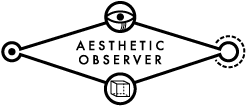I totally forgot to reply to this blog.
In other news, since project 2 is starting soon, I thought that it would be a good idea to share a relevant article about packaging design. I stumbled upon this while researching for the project.
Here are some of my favorite designs.

I adore the "bean bag" for it's organic, transparent look. The product looks so much fresher in it than the normal bean products I saw at the supermarket last week. (It reminds me of the "
milk in a bag" I encountered in China back in the 2000s, I think they have those in Canada now.)
The pun involved in this design is just genius. Putting mints in coin rolls (usually distributed by monetary mints) makes it a memorable item that you can find in store.
This reminds me of the IKEA packages. The important texts are bold and highly visible on the package. The opening makes it easy for consumers to examine the light bulbs before purchasing. Also, just imagine how much ink (& money) the manufacturer will save by using this design.

I just love the dogs in this one.

The milk cartons are great because they are simple. It really gave me the impression that the milk are perfectly white and pure. Here is also a
similar design that I also like.

This has to be my favorite one. Despite the cost concern I loved how it has the academic theme. Perhaps it could be sold individually by the test tubes.
These are all designed by students, not that we need to raise the bar because of that...
In you're interested in seeing all 30 of them, here's the link to the article:
Awesome






































.jpg)